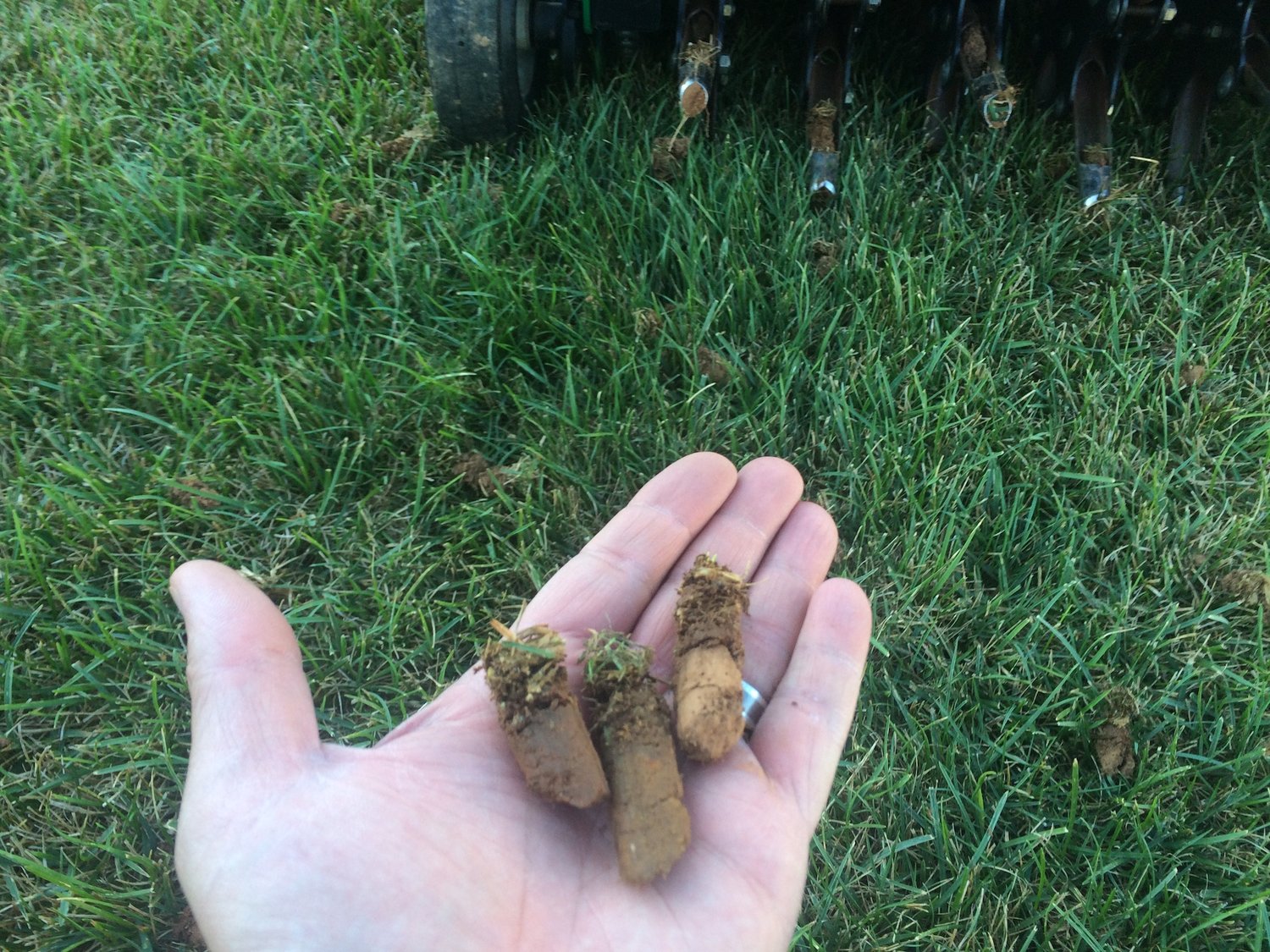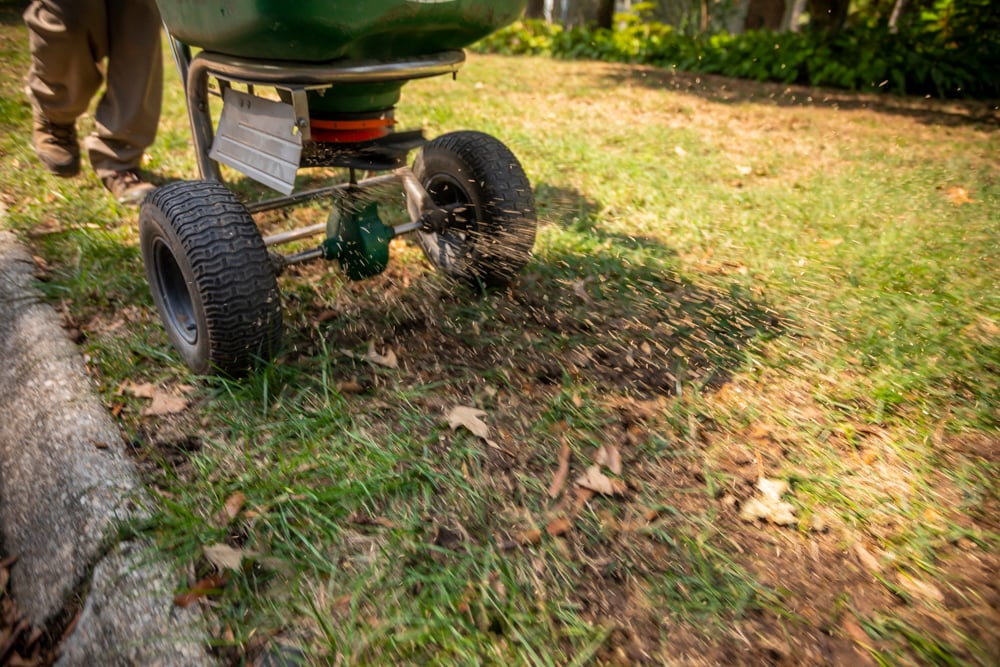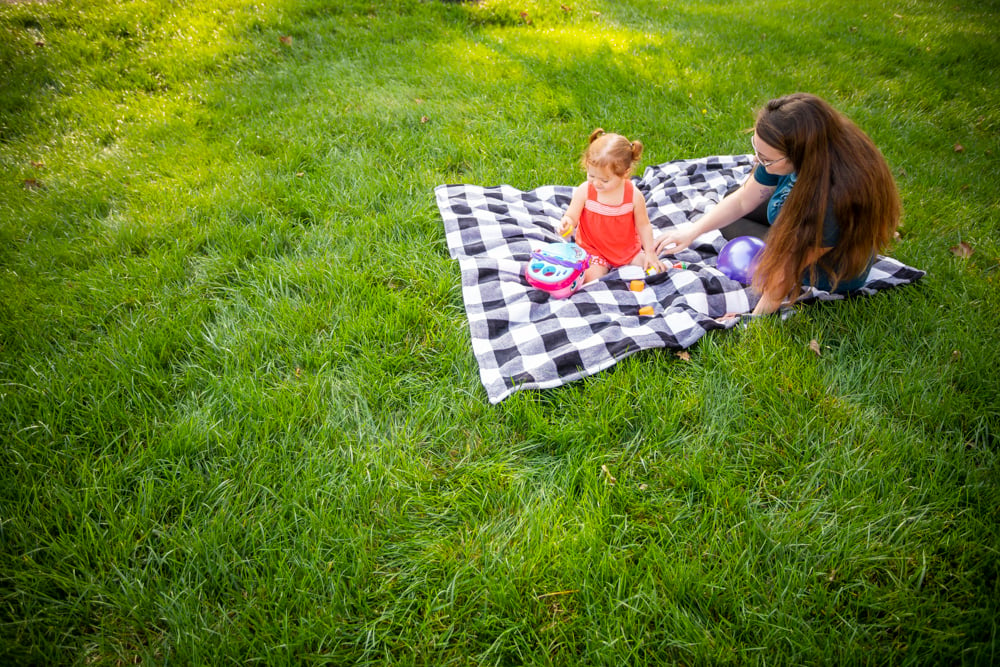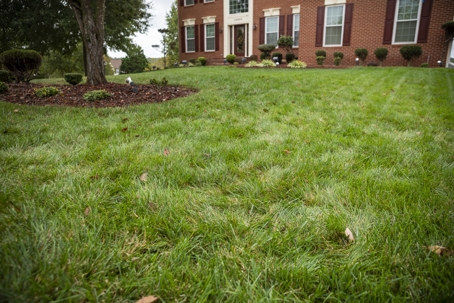Watering After an Aeration & Seeding: How Often, How Long & How Much in Central and Southern MD
If you find yourself staring across the street and getting a little envious of your neighbor’s lawn, you might be wondering what magic they use.
Well, we have to tell you: It’s not magic that creates an enviable lawn. A lawn is made up of plants that require the right care, nutrients, and attention. Give them just the right amount of what they need, and they will show you their thanks with a thick, green coat and attractive, even carpet of want-to-walk-in-it-barefoot kind of lawn.
Some lawn care services have become easier to understand over the years. If your lawn is brown, it needs water. If it’s dull, it might need fertilization. And if it’s long, it needs to be mowed. These are some basic principles (obviously, there’s a bit more to how each of these is done correctly based on your lawn’s needs), but you get the point.
However, there are two services that are very important for lawns that aren’t always thought of right away: aeration and overseeding. And they do wonders for a tired Central or Southern Maryland lawn.
Use This Tool to Compare Your Local Lawn Care Companies
In fact, if you are noticing a thin, bare lawn that isn’t responding to fertilization or other treatments the same way it used to, maybe it’s time for a little TLC with these two services. And if you correctly water after aeration and seeding, you amplify the likelihood that your lawn will have the ultimate turnaround.
A Little Aeration and Overseeding Overview
In Central and Southern Maryland, tall fescue is our desired main grass species. Tall fescue grows in clumps before it comes together to form your larger lawn. One sign that your lawn might need aeration and seeding, in addition to others like a thinning appearance and bare spots, is that it is reverting to that clumpy appearance again. Before we get to how watering after aeration and seeding is important, let’s review what these services do for a lawn.
Over the years, water, foot traffic, and everyday activity beat down on lawns and the soil beneath them. They become compacted. Core aeration breaks up this compaction. A lawn care professional will use a machine called an aerator to pull small soil plugs or cores from your grass and deposit them on the lawn. In a week or so, those plugs will break up and disappear into the lawn and soil. Aeration enables your lawn to function better because it’s improving oxygen, water and nutrient flow to the lawn roots, where they are needed most. 
Overseeding is a great practice after aeration because the seed to soil contact is amplified when those soil plugs are extracted and deposited on the surface. This means those bare spots will fill in fast; you’ll forget they were even there.
However, both services require some important aftercare to ensure their success. You guessed it: water!
Water: Your Very First To-Do List Item
Once your lawn care professional is done aerating and overseeding, you want to saturate your lawn as soon as possible. You want to keep it evenly moist.
What does saturate mean? It depends on your soil type. If it’s heavy clay, it’ll take longer to saturate than a sandier soil. How long you should water after aeration and seeding is about one hour per section to get the water down an inch or two into the soil. The goal is to keep the seed moist, but not submerged, at all times.
That brings us to frequency. When it comes to how often you should water after aeration and seeding, you want to pay attention to weather conditions. If seed is drying out during the day and Mother Nature isn’t providing any additional rainfall, you’ll need a second watering each day to ensure consistent moisture until those seeds germinate, which takes about 10 to 14 days.
Once the seed germinates, you can reduce watering to once a day for 30 minutes each section until that lawn is established in those bare spots. Don’t forget this important step. Many people will water right away and until germination, but then they stop watering, thinking their job is done. You want to round out this irrigating schedule so those last seeds germinate and those tender new lawn shoots have a chance to grow strong.
Why How Often You Water After Aeration and Seeding is So Important?
What’s all this fuss about watering after these services?
Get this: If after aeration and overseeding, you water correctly, your germination rate on those seeds jumps to 90 to 95 percent. That means you maximize nearly all the seed that was put down. You certainly don’t want to waste this valuable seed that can turn your lawn from bare to brilliant. Watering a lawn after aeration and seeding can make it happen. 
On top of that, of all the lawns that fail to yield great results from overseeding, 99 percent of them didn’t receive adequate water.
Maximize the Benefits of Aeration and Overseeding
No one wants to waste money on services that can elevate your lawn from bland to glam with the right attention afterward. How much you water after aeration and seeding can make all the difference.
Confused or worried that your lawn might need these services and that you won’t know what to do about watering afterward? We get it. It can seem like a big process.
But don’t sweat it. The right lawn care service partner can educate you on the basics and make you feel comfortable so you know how the process works and how to easily implement a watering after aeration and seeding schedule, so you don’t skip a beat.
Before you know it, your neighbor may be staring out at your lawn wondering how it got so great. 
Want to amp up your lawn’s health and your happiness? Let’s talk. Natural Green can help. Get started today with a free quote. Together, we’ll customize a plan that makes your lawn great again.
If you find yourself staring across the street and getting a little envious of your neighbor’s lawn, you might be wondering what magic they use.
Well, we have to tell you: It’s not magic that creates an enviable lawn. A lawn is made up of plants that require the right care, nutrients, and attention. Give them just the right amount of what they need, and they will show you their thanks with a thick, green coat and attractive, even carpet of want-to-walk-in-it-barefoot kind of lawn.
Some lawn care services have become easier to understand over the years. If your lawn is brown, it needs water. If it’s dull, it might need fertilization. And if it’s long, it needs to be mowed. These are some basic principles (obviously, there’s a bit more to how each of these is done correctly based on your lawn’s needs), but you get the point.
However, there are two services that are very important for lawns that aren’t always thought of right away: aeration and overseeding. And they do wonders for a tired Central or Southern Maryland lawn.
Use This Tool to Compare Your Local Lawn Care Companies
In fact, if you are noticing a thin, bare lawn that isn’t responding to fertilization or other treatments the same way it used to, maybe it’s time for a little TLC with these two services. And if you correctly water after aeration and seeding, you amplify the likelihood that your lawn will have the ultimate turnaround.
A Little Aeration and Overseeding Overview
In Central and Southern Maryland, tall fescue is our desired main grass species. Tall fescue grows in clumps before it comes together to form your larger lawn. One sign that your lawn might need aeration and seeding, in addition to others like a thinning appearance and bare spots, is that it is reverting to that clumpy appearance again. Before we get to how watering after aeration and seeding is important, let’s review what these services do for a lawn.
Over the years, water, foot traffic, and everyday activity beat down on lawns and the soil beneath them. They become compacted. Core aeration breaks up this compaction. A lawn care professional will use a machine called an aerator to pull small soil plugs or cores from your grass and deposit them on the lawn. In a week or so, those plugs will break up and disappear into the lawn and soil. Aeration enables your lawn to function better because it’s improving oxygen, water and nutrient flow to the lawn roots, where they are needed most. 
Overseeding is a great practice after aeration because the seed to soil contact is amplified when those soil plugs are extracted and deposited on the surface. This means those bare spots will fill in fast; you’ll forget they were even there.
However, both services require some important aftercare to ensure their success. You guessed it: water!
Water: Your Very First To-Do List Item
Once your lawn care professional is done aerating and overseeding, you want to saturate your lawn as soon as possible. You want to keep it evenly moist.
What does saturate mean? It depends on your soil type. If it’s heavy clay, it’ll take longer to saturate than a sandier soil. How long you should water after aeration and seeding is about one hour per section to get the water down an inch or two into the soil. The goal is to keep the seed moist, but not submerged, at all times.
That brings us to frequency. When it comes to how often you should water after aeration and seeding, you want to pay attention to weather conditions. If seed is drying out during the day and Mother Nature isn’t providing any additional rainfall, you’ll need a second watering each day to ensure consistent moisture until those seeds germinate, which takes about 10 to 14 days.
Once the seed germinates, you can reduce watering to once a day for 30 minutes each section until that lawn is established in those bare spots. Don’t forget this important step. Many people will water right away and until germination, but then they stop watering, thinking their job is done. You want to round out this irrigating schedule so those last seeds germinate and those tender new lawn shoots have a chance to grow strong.
Why How Often You Water After Aeration and Seeding is So Important?
What’s all this fuss about watering after these services?
Get this: If after aeration and overseeding, you water correctly, your germination rate on those seeds jumps to 90 to 95 percent. That means you maximize nearly all the seed that was put down. You certainly don’t want to waste this valuable seed that can turn your lawn from bare to brilliant. Watering a lawn after aeration and seeding can make it happen. 
On top of that, of all the lawns that fail to yield great results from overseeding, 99 percent of them didn’t receive adequate water.
Maximize the Benefits of Aeration and Overseeding
No one wants to waste money on services that can elevate your lawn from bland to glam with the right attention afterward. How much you water after aeration and seeding can make all the difference.
Confused or worried that your lawn might need these services and that you won’t know what to do about watering afterward? We get it. It can seem like a big process.
But don’t sweat it. The right lawn care service partner can educate you on the basics and make you feel comfortable so you know how the process works and how to easily implement a watering after aeration and seeding schedule, so you don’t skip a beat.
Before you know it, your neighbor may be staring out at your lawn wondering how it got so great. 
Want to amp up your lawn’s health and your happiness? Let’s talk. Natural Green can help. Get started today with a free quote. Together, we’ll customize a plan that makes your lawn great again.
Share This
Topics: Lawn Care


